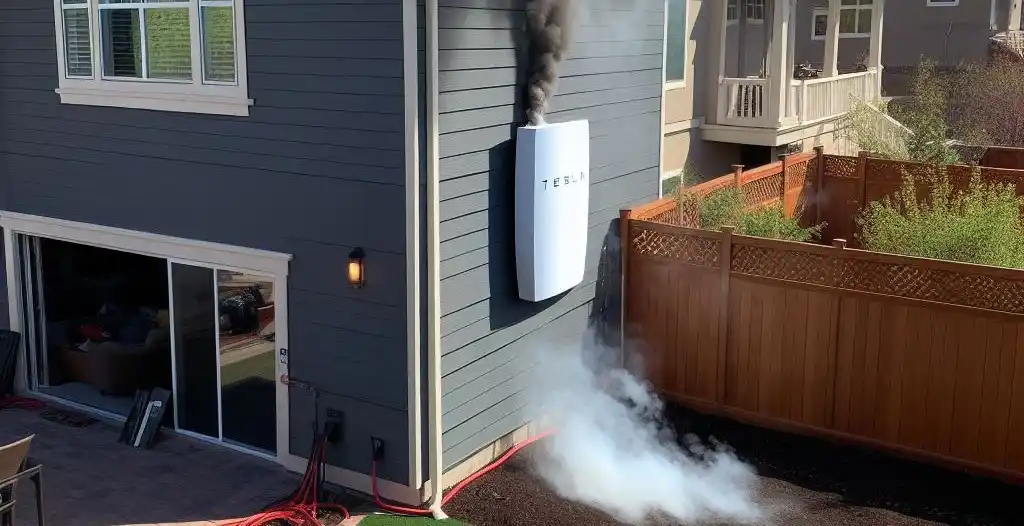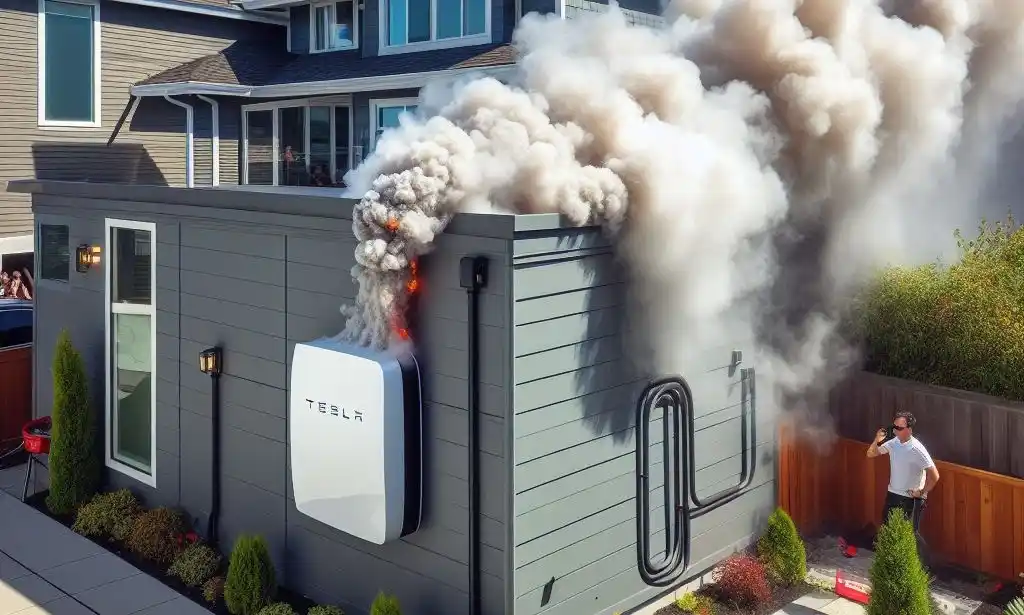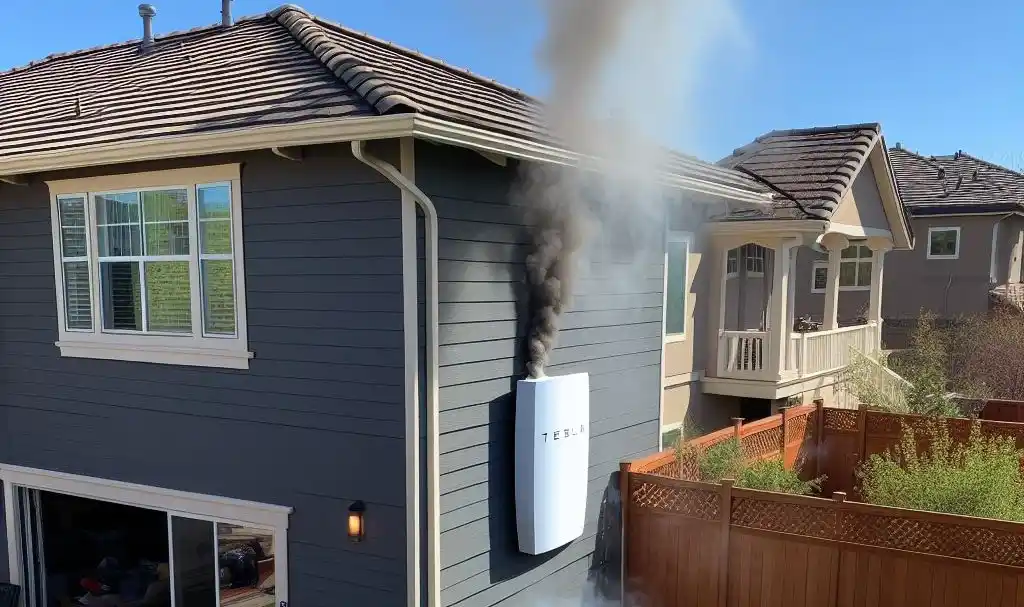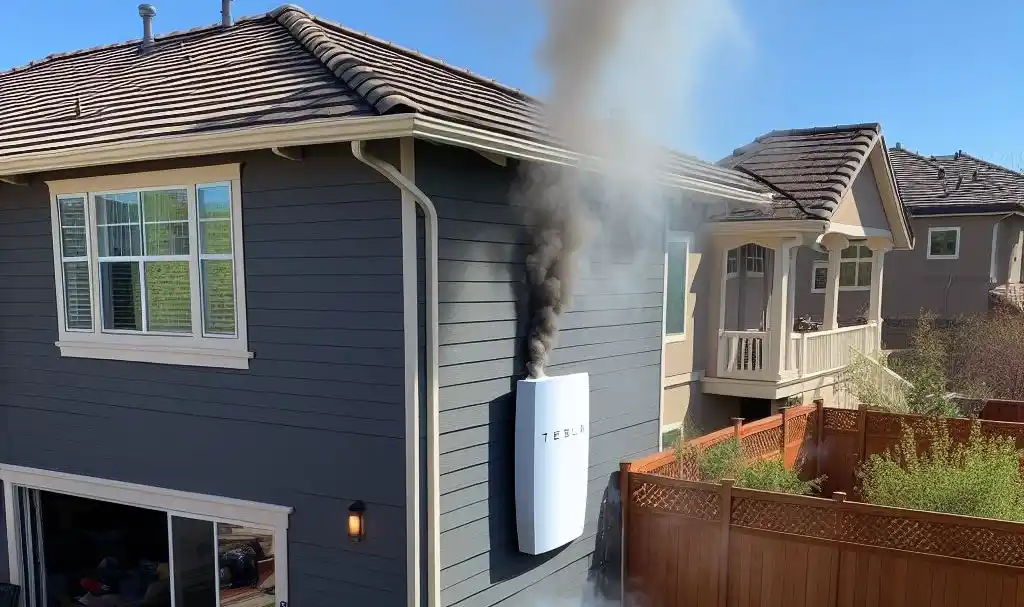Is the Tesla Powerwall a Fire Hazard? Assessing the Tesla Powerwall Fire Risk
The Powerwall, Tesla’s home battery for solar energy storage, offers an appealing vision – the ability to store renewable energy and use it anytime. However, some safety concerns have been raised about Tesla Powerwall Fire Risk. In this comprehensive guide, we will cover the Tesla Powerwall Fire Risk and analyze the realities behind these risks and provide research-backed recommendations for safely installing Tesla batteries.
Table of Contents
Introduction to Tesla Batteries
As a leader in electric vehicles and energy products, Tesla has done more to push batteries into the mainstream. Tesla uses lithium-ion battery packs for both its electric cars and the Powerwall home energy storage systems. These high-density batteries offer excellent capacity but do come with fire risks under certain conditions.
Lithium-ion batteries store and release energy through positively charged lithium ions moving between two electrodes. Any flaw in separating those electrodes can lead to uncontrolled energy transfers, known as thermal runaway, where reactions release intense heat and gas. The flammable electrolyte solution enables this fiery chain reaction to spread through battery cells.
While rare, such battery fires present unique risks compared to gas or diesel fires. The Powerwall contains up to 16 kWh, enough to equal 49 gallons of gasoline. Instead of venting like a gas tank, damaged lithium-ion batteries burn intensely thanks to all that stored chemical energy. Once one cell undergoes thermal runaway, neighboring cells tend to follow suit.
So what fire risks do Tesla’s Powerwall batteries pose for homes? And how do Tesla’s safety provisions stack up against the dangers? Let’s analyze the available data.
Documented Cases of Tesla Battery Fires

Reports of Tesla battery fires fall into two categories – those originating in vehicles, mainly the Model S or Model 3, and those specifically involving Powerwall home battery packs.
Vehicle Fires
High-profile news stories have drawn attention to Teslas catching fire after crashes. In 2018, a Tesla Model S burned for hours after hitting a wall, requiring specialized foam to fully extinguish it. A 2019 crash in Moscow saw a Model 3 ignite multiple times over 48 hours.
Investigations point to vehicle damage triggering cell failure during these incidents. Crashes can break battery shields and pierce cells, allowing materials to mix and spark thermal runaway. The Model S battery tunnel design has faced scrutiny for directing flames toward the cabin.
Overall though, vehicle fires appear relatively rare for Tesla. A nationwide survey found just 25 garage and outdoor parking fires involving electric vehicles between 2014-2017, mostly concentrated in California. Studies estimate EV fires generally occur at less than one-fifth the rate of gas car fires. The odds seem lower for Teslas – a quality comparison reported just 3 Tesla incidents per 100,000 vehicles, compared to 25 per 100,000 average across all makes.
Home Powerwall Fires
Compared to vehicle damage, Powerwall battery issues stem more from flaws in installation or operation. One recent blaze saw faulty cabling ignite a row of Powerwalls. South Korea and New Zealand have reported Powerwall fires spreading to homes when installed indoors.
The most severe U.S. Powerwall fire occurred in 2019 at a California home, causing over $800k in damage. Investigators found the newly installed, garage-based system hadn’t been properly set up, leaving “an area of concern near the installation.” The Powerwalls reignited multiple times before being fully extinguished and removed.
Such Powerwall fires appear very rare, especially once accounting for the over 200,000 units estimated to be installed worldwide. One examination suggested Tesla grid storage products have around just one to two thermal runaway incidents per 10,000 units per year. So while vivid and concerning when they do happen, house fires directly involving Powerwalls seem limited compared to overall installation numbers.
Factors That Can Lead to Thermal Runaway

While the exact chain of events differs across lithium-battery mishaps, the root causes often come down to breakdowns in key safeguards against thermal runaway:
Faulty Installation
Incorrect wiring and loose connections can create shorts, heating cells to the point of failure. Rushed grid or solar pairing jobs may overlook vulnerabilities. Faults have stemmed from damage during shipping and handling as well.
Power Imbalances
Overcharging battery cells strains insulating membranes between electrodes. Localized overheating then risks cascading through neighboring layers. Sudden power draws also overload components.
Internal Debris
Cell manufacturing defects and microscopic metal shards from machining can trigger core shorts. Impurities introduced during production lower the threshold for runaway.
Mechanical Shock
Direct crushing force or severe punctures break down physical barriers between materials. Structural breaches enable fiery chemical interactions. Fires have occurred after towing accidents involving EVs.
Thermal Management Failures
Lacking effective cooling control can allow cells to hit hazardous temperatures during operation and charging. The flammable electrolyte solution compounds this.
These factors underscore how lithium-ion fire risks accumulate from production through everyday use. That’s why a multi-layered approach across supply chains, engineering, and worksites delivers the greatest safety.
Safety Mechanisms in Tesla Batteries
Tesla deploys several lines of defense to limit fire risks inherent to lithium-ion batteries, centered around preventing thermal runaway:
- Tight Production Oversight – Keeping careful tabs on materials and machining quality lowers the risks of contaminants infiltrating cells. Assembly rigor reduces the chances of flaws slipping through.
- Battery Management Systems – Networked monitoring tracks voltage and temperature changes 24/7 and regulates currents to avoid overheating. It can isolate failing cells before spreading issues.
- Thermal Runaway Barriers – Fire-retardant lining around battery packs contains cell failures. The multi-layered shell resists punctures reaching modules.
- Liquid Cooling – Flat cooling tubes bonded along cells whisk away excessive heat. This maintains safe operating parameters for detecting and avoiding imbalances early.
- Over-the-Air Updates – Centralized software lets Tesla remotely update battery functions, deploy fixes, and push upgraded safety features overnight.
Together these precautions limit battery mishaps across over 3 billion miles logged by Teslas worldwide. And Tesla’s extensive battery testing exceeds requirements – pressure simulations show cells shouldn’t combust even after repeat crushing. However external factors can still override built-in safeguards in unfortunate cases.
Assessing the Actual Risks

Safety fears around the Tesla Powerwall often fixate on vivid recent fires and theorize future dangers. The reality looks far less alarming upon closer inspection:
- Tesla reports just 1 fire incident per every 2,091 Powerwall 2 units in Australia over 6 years.
- Estimates suggest 1-2 thermal runaway cases yearly per 10,000 Powerwalls. That’s roughly 0.01-0.02% of units.
- Compared to home fires from common causes like stoves or smoking materials, Powerwall blazes appear exceedingly rare.
- NO Powerwall fire has yet spread to cause significant home damage in the U.S. unlike Australia and New Zealand.
And Tesla’s safety regimen has proven effective – consider the 98.4% lower likelihood of fires compared to gas cars. Ultimately occasional headlines seem to distort perceptions around the Powerwall’s safety.
NFPA Guidelines for Safe Installation
The National Fire Protection Association (NFPA) creates codes and standards designed to minimize structure fires across electrical systems and appliances using scientific analysis. Their guidelines offer prudent advice for configuring home battery systems like the Powerwall.
Location and Spacing
- Install battery enclosure outdoors at least 3 feet from exterior walls and property lines
- Maintain 3 feet clearance around all sides for access and ventilation
- Avoid installation in garages or underneath buildings/decks (higher fire spread risks)
- Separate from living areas by 1-hour fire-rated construction
Housing Construction
- Use non-combustible material for enclosure like concrete
- Add fire-rated sealed doors, vent caps, and other self-closing openings
- Limit exposed combustible insulation and structural framing
- Design flooring and surroundings to contain spilled electrolyte
- Seal conduit openings with non-combustible material
Warnings and Suppression
- Connect smoke alarms to indoor living spaces to provide early warning
- Integrate suppression sprinklers with smoke detection system
- Post signs on enclosure doors identifying fire risks
- Store class D fire extinguisher rated for lithium near battery bank
Adhering to these codes secures critical buffers and redundancies to prevent Powerwall fires from reaching homes. It also ensures exterior spaces don’t further fuel escaping fires.
Best Practices for Homeowners
Safely integrating a Powerwall goes beyond the installation itself. Follow these tips for household operation:
- Check Connections – Listen for high-pitched noise indicating loose wiring arcing in battery hardware.
- Mind Interior Temps – Don’t exceed 77°F for Powerwall spaces, allowing proper thermal regulation.
- Allow Ample Ventilation – Prevent concentrated heat buildup since gasses can combust above 494°F
- Keep Combustibles Clear – Maintain a sizable no-storage radius around units without clutter or debris.
- Clean and Inspect – Carefully wipe down cabinets every 6 months and check for damage or odd smells.
- Review Monitoring – Log in to the Powerwall portal routinely to confirm normal usage graphs and temperature trends.
- Consider Safeguards – Have fire extinguishers and emergency hammer/axe for punctured Powerwalls on hand.
- Disconnect if Issues Arise – Shut down a malfunctioning Powerwall exhibiting warning signs like odd smells or noises until resolving problems.
Staying vigilant to catch flaws early substantially lowers safety issues. Knowledge and precaution beat panic.
Looking Ahead: Improvements in Battery Safety
While today’s lithium tech makes leaps over old rechargeables, room for innovation remains to enhance stability and reduce fire risks:
- Solid-State Electrolytes – Replacing flammable liquid solutions with non-volatile solid conductors cuts off this combustion source. Toyota plans to commercialize solid-state car batteries by 2025.
- Flexible Ceramic Shielding – Adding fracture-resistant ceramic films between battery layers contains failures by preventing temperature spikes from spreading across cells.
- Lithium Iron Phosphate Chemistry – This modified cathode material sacrifices some energy density but has an exceptionally stable molecular structure resisting thermal runaway.
- Fire Retardant Coatings – New intumescents swell when heated, forming a protective char barrier blocking flames and gasses. This adds backup shielding at the cell level.
- Improved Thermal Management – Advanced heat pipes, multi-point sensors, and liquid cooling channels take precise control over waste heat before hitting critical points.
Ongoing materials and battery management software breakthroughs will only make systems like the Powerwall more resilient over their lifespan. Continued clean energy progress depends on it.
Conclusion: Tesla Powerwall Fire Risk
Based on the evidence, Tesla Powerwall fires appear to be outliers among the over 200,000 units safely storing energy daily around the world. And Tesla’s rigorous safeguards testing and responsive updates instill confidence. Thermal runaways stem from circumventing safety measures – not flaws in the core battery design.
Appropriate installation precautions, fire-prevention best practices, and advancing technology should make such incidents even more isolated going forward. Homeowners can take reasonable steps to eliminate any lingering risks.
So while vivid headlines can breed undue worries and skepticism, homeowners should feel empowered to assess risks rationally. The numbers suggest that Powerwalls present no greater fire concerns than other common household electric systems. That means securely harnessing their solar capabilities to enable cleaner, more resilient living spaces.
Frequently Asked Questions
Q: How often do Tesla Powerwalls catch fire?
A: Current estimates based on global installations suggest around 1-2 thermal runaway incidents per 10,000 Powerwall units annually. So fires appear very rare.
Q: What causes a Tesla home battery to catch fire?
A: Most known cases tie to improper installation damaging wiring near flammable cells. Manufacturing defects and extreme ambient heat have also sparked issues allowing unchecked energy transfers between battery components.
Q: Are Tesla Powerwalls safe for indoor installation?
A: Indoor installation remains strongly discouraged by codes and Tesla based on fire data of blazes spreading through homes. NFPA standards only advise outdoor installation separated from living spaces.
Q: How much damage can a Powerwall fire cause?
A: Fully involved battery fires intensify quickly thanks to significant stored chemical energy. A 2019 California garage fire saw over $800k in residence damage. But no house fires traced directly to Powerwalls in the U.S. so far.
Q: What precautions reduce Powerwall fire risks?
A: Rigorously following fire prevention guidelines during installation along with ventilation, maintenance, and storage buffers during operation substantially lowers the chances of thermal runaways igniting and spreading.







